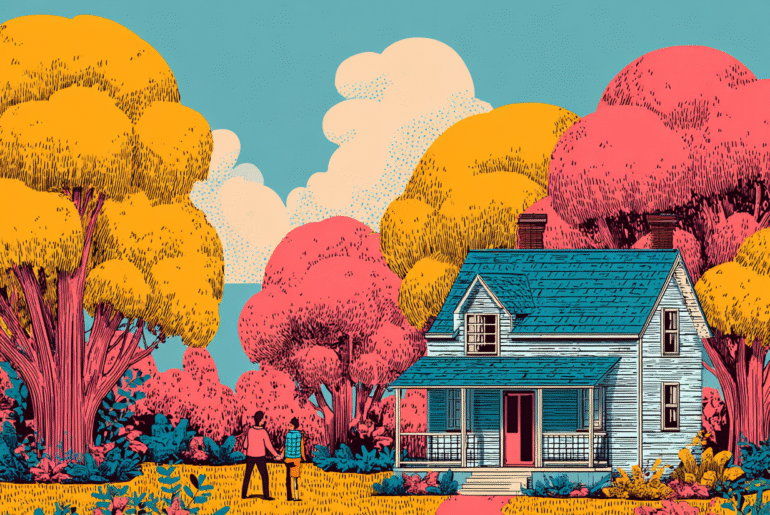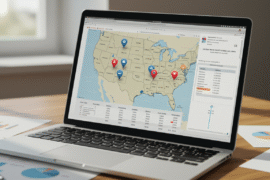This article may contain references to products or services from one or more of our advertisers or partners. We may receive compensation when you click on links to those products or services. Nonetheless, our opinions are our own.
The information presented in this article is accurate to the best of our knowledge at the time of publication. However, information is subject to change, and no guarantees are made about the continued accuracy or completeness of this content after its publication date.
- The Overlooked Financial Realities of Homeownership
- 1. Down Payment and Its Lasting Impact
- 2. Closing Costs Often Overlooked
- 3. Maintenance That Never Ends
- 4. Property Taxes That Continue to Climb
- 5. Insurance That Reflects Risk
- 6. Utilities and Seasonal Surges
- 7. Homeowners Association (HOA) Fees and Extra Charges
- 8. Renovations and Modern Updates
- 9. Appliances and Their Replacement Cycle
- 10. Commuting and Transportation Expenses
- Costs That Often Go Unmentioned
- Frequently Asked Questions
- Recommended Reads
The Overlooked Financial Realities of Homeownership
Buying a home is often seen as a milestone, an exciting and rewarding achievement. Yet beyond the visible features and design choices, many expenses remain understated or even unspoken during the homebuying process. Below is a detailed look at ten common costs that often receive little emphasis during home tours or early conversations with real estate professionals.
1. Down Payment and Its Lasting Impact
What may appear as a manageable percentage can quickly become a substantial upfront cost. While some loan programs allow as little as 3% down, the actual amount often runs into tens of thousands. Smaller down payments usually require private mortgage insurance (PMI), an added monthly cost that can stretch a household budget further.
2. Closing Costs Often Overlooked
Closing costs are rarely highlighted at the start of a home search, yet they are almost always required at the finish. Typically ranging from 2% to 5% of the purchase price, they include charges for the loan, appraisal, title services, and more. These expenses often surprise buyers who are focused only on the down payment.
3. Maintenance That Never Ends
Owning a home means being responsible for all upkeep. From replacing aging HVAC units to patching roof leaks, repairs and maintenance are a constant reality. Financial planners often suggest reserving around 1% of the home’s value each year to handle these needs. Older homes or those in harsh climates may require even more.
4. Property Taxes That Continue to Climb
Property taxes are based on assessed value and often increase over time, particularly in growing or redeveloping areas. As neighborhood amenities improve or local real estate markets heat up, taxes may adjust upward. Reviewing historical tax rates and community development plans can help estimate future costs.
5. Insurance That Reflects Risk
Homeowners insurance is not just a formality; it is often required by lenders and is essential for protecting property and possessions. Costs can vary greatly depending on location, weather risk, home features, and policy terms. Areas prone to natural disasters may face significantly higher premiums.
6. Utilities and Seasonal Surges
Heating, cooling, water, and waste services can add hundreds to a monthly budget, especially in homes with outdated systems or poor insulation. Utility costs tend to spike during summer and winter months. Requesting utility history from a seller can offer a more complete view of expected bills.
7. Homeowners Association (HOA) Fees and Extra Charges
Many planned communities and condominiums come with HOA fees, which support shared spaces like pools, landscaping, and gated entry. These fees vary widely by location and services included. Special assessments may also arise if the HOA needs funds for large repairs or upgrades beyond regular operations.
8. Renovations and Modern Updates
Cosmetic changes like flooring or cabinetry can escalate quickly in cost. Larger remodeling efforts require careful budgeting and may involve permit fees and extended timelines. Even minor upgrades, when combined, can place pressure on savings.
9. Appliances and Their Replacement Cycle
Not every home comes with new appliances, and many included units may be near the end of their service life. Refrigerators, ovens, washers, and dryers often need replacement every 8 to 15 years. A single major purchase can run into thousands of dollars, depending on quality and features.
10. Commuting and Transportation Expenses
Living farther from work or school may reduce home prices but can increase daily travel expenses. Gas, tolls, parking, and public transit fees all add up over time. Considering both property price and proximity to daily destinations helps balance convenience with cost.
Voted "Best Overall Budgeting App" by Forbes and WSJ
Monarch Money helps you budget, track spending, set goals, and plan your financial future—all in one app.
Get 50% OFF your first year with code MONARCHVIP
Costs That Often Go Unmentioned
Many buyers focus on the home price without fully accounting for the long-term financial demands of ownership. From insurance premiums to utility bills, the full financial picture includes far more than just mortgage payments. Careful planning can reduce stress and protect financial health for the long term.
Frequently Asked Questions
What are property taxes, and why do they change?
Property taxes are set by local governments based on assessed home value. They often increase if market values rise or community infrastructure is upgraded. Reviewing historical records can give insight into future expectations.
How does homeowners’ insurance influence your budget?
Homeowners insurance protects against damage, theft, and liability. Rates vary widely depending on where the home is located and how much coverage is selected. Proper planning for these premiums avoids surprises after move-in.
What do closing costs include?
Closing costs generally cover appraisal fees, legal services, title searches, loan origination, and other required transactions to finalize the purchase. Buyers should review estimated costs early to avoid last-minute strain.
How much do utilities impact affordability?
Monthly utility bills vary by region and property type. Larger homes, older systems, and energy inefficiency can increase electric, gas, and water usage significantly throughout the year.
Are HOA fees required?
If the property is part of an association, fees are mandatory. They pay for maintenance of shared areas, and failure to pay can lead to fines or even liens. Reading the HOA’s financials and meeting notes can help assess their stability.
What are special assessments?
Special assessments are one-time fees charged by HOAs for large repairs or unexpected expenses not covered in the regular budget. They are often unpredictable and can be significant.

Reviewed and edited by Albert Fang.
See a typo or want to suggest an edit/revision to the content? Use the contact us form to provide feedback.
At FangWallet, we value editorial integrity and open collaboration in curating quality content for readers to enjoy. Much appreciated for the assist.
Did you like our article and find it insightful? We encourage sharing the article link with family and friends to benefit as well - better yet, sharing on social media. Thank you for the support! 🍉
Article Title: 10 Hidden Costs That Make Homeownership More Expensive
https://fangwallet.com/2025/06/28/10-hidden-costs-that-make-homeownership-more-expensive/The FangWallet Promise
FangWallet is an editorially independent resource - founded on breaking down challenging financial concepts for anyone to understand since 2014. While we adhere to editorial integrity, note that this post may contain references to products from our partners.
The FangWallet promise is always to have your best interest in mind and be transparent and honest about the financial picture.
Become an Insider

Subscribe to get a free daily budget planner printable to help get your money on track!
Make passive money the right way. No spam.
Editorial Disclaimer: The editorial content on this page is not provided by any of the companies mentioned. The opinions expressed here are the author's alone.
The content of this website is for informational purposes only and does not represent investment advice, or an offer or solicitation to buy or sell any security, investment, or product. Investors are encouraged to do their own due diligence, and, if necessary, consult professional advising before making any investment decisions. Investing involves a high degree of risk, and financial losses may occur including the potential loss of principal.
Source Citation References:
+ Inspo
There are no additional citations or references to note for this article at this time.












































